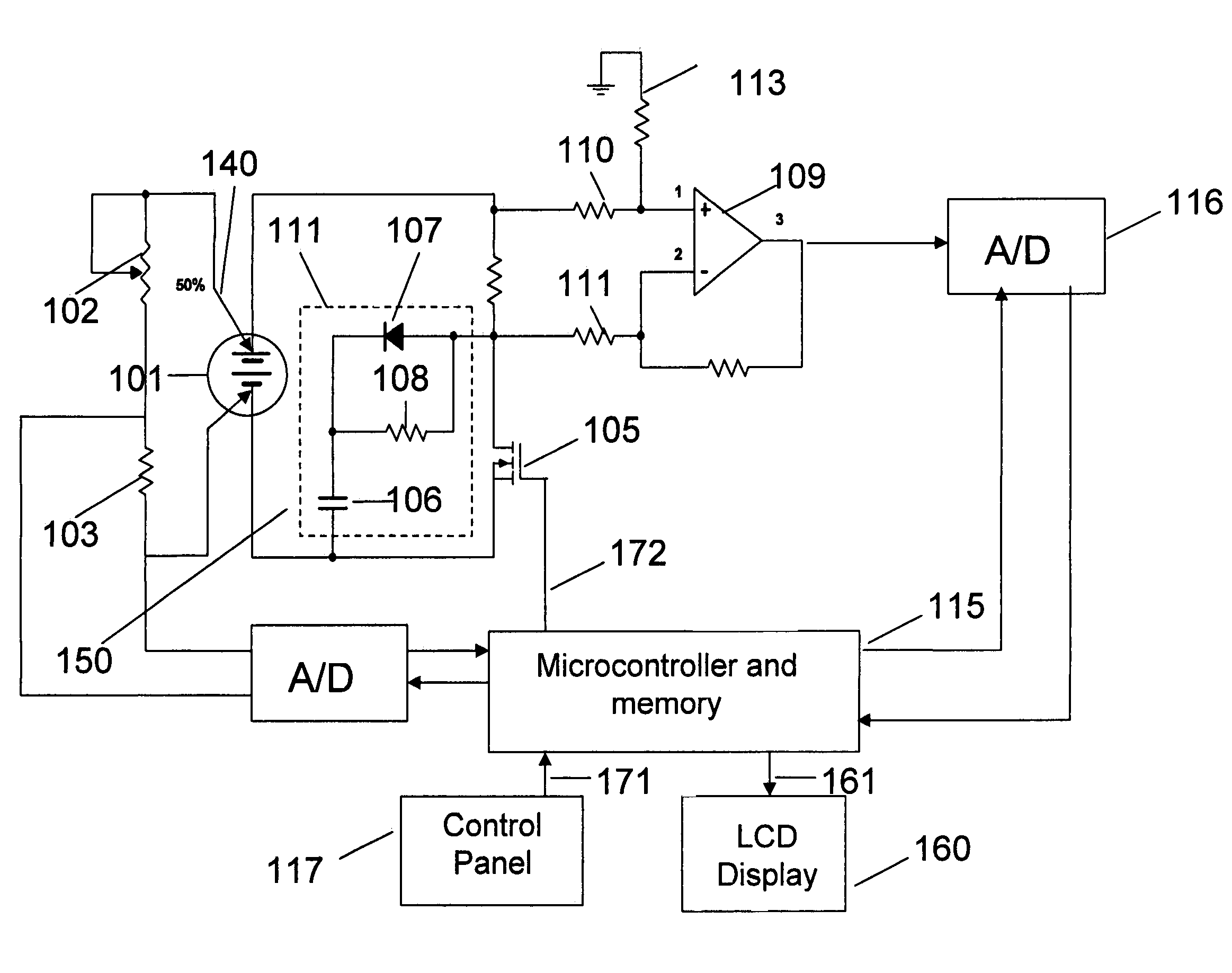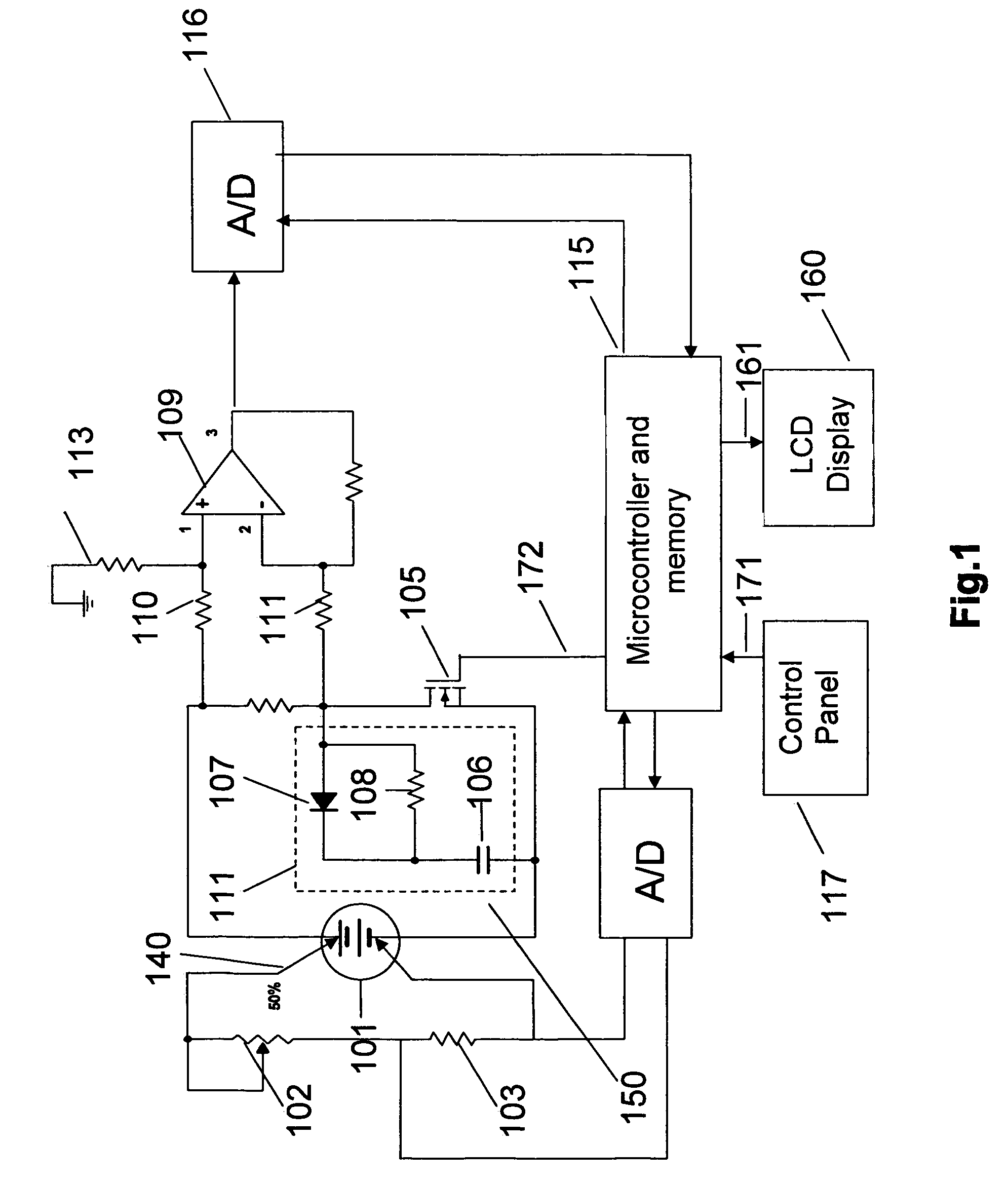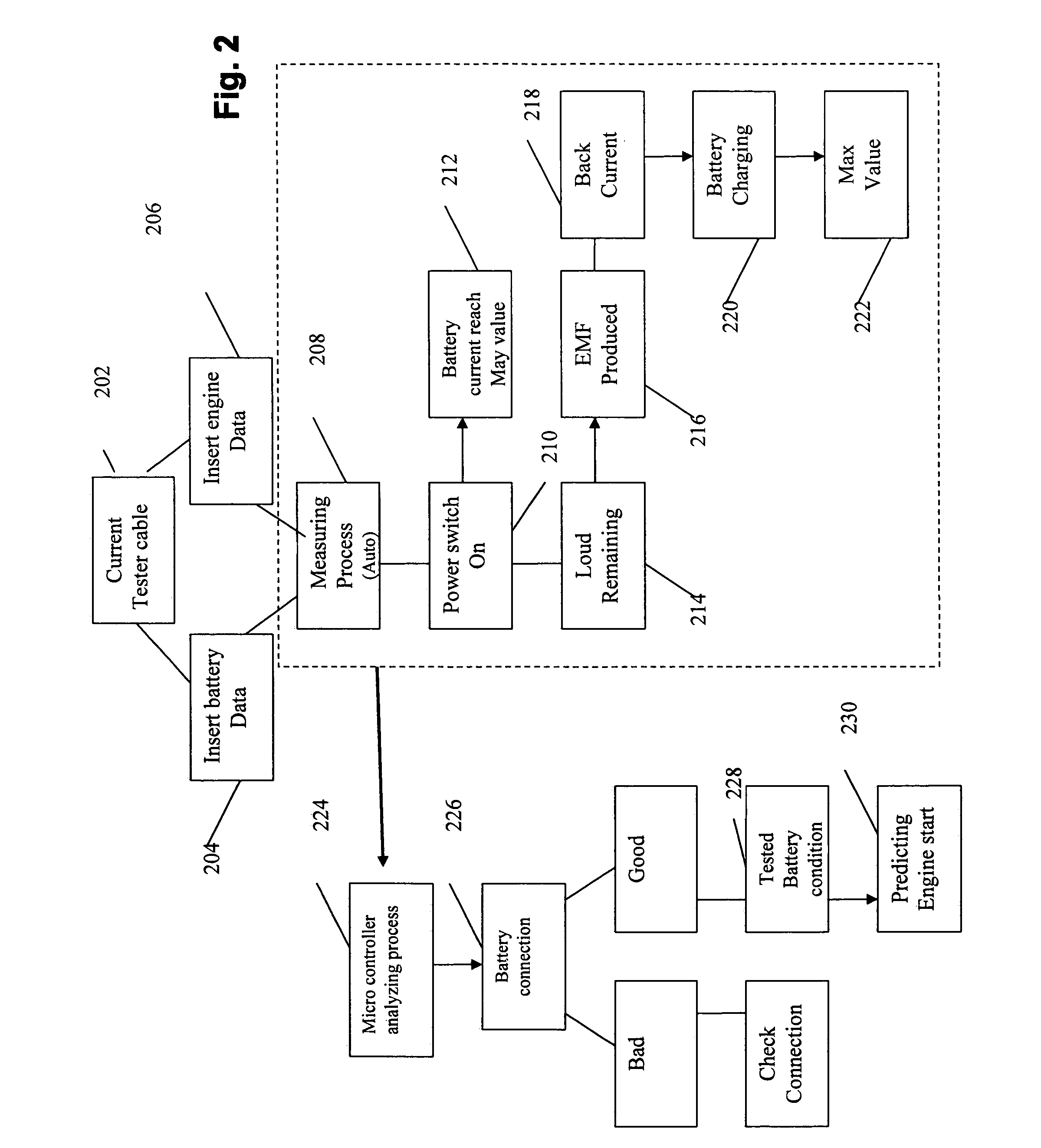Method for testing battery condition
a battery condition and test method technology, applied in the field of methods, can solve the problems of low battery discharge energy, battery cannot be tested at high current conditions, inaccurate results received for predicting cca, soc and soh
- Summary
- Abstract
- Description
- Claims
- Application Information
AI Technical Summary
Benefits of technology
Problems solved by technology
Method used
Image
Examples
Embodiment Construction
[0039]The following describes an embodiment of the present invention. Referring to FIG. 1, a block circuit diagram 100 of a relevant portion of a testing apparatus is shown. In order to measure its potential voltage, the tested battery 101 is connected serially, by a pair of Kelvin clamps 140, to resistors 102, and 103. For receiving an accurate measurement, the voltage is divided between the resistors. Resistor 102 has varying resistance while resistor 103 has a constant resistance. Another pair of Kelvin clamps 150, connect the tested battery 101 to resistor 104, which is used as a measuring resistive shunt, and to power switch 105 (may be a MOSFET or a IGBT transistors). Snubber circuit 150 is connected in parallel to switch 105. The snubber circuit 150 comprises: a capacitor 106 connected serially to a parallel connected diode 907 and resistor 108.
[0040]A differential amplifier 109, used for measuring the current in the circuit 100, is connected by resistors 110 and 111 to shunt...
PUM
| Property | Measurement | Unit |
|---|---|---|
| time period | aaaaa | aaaaa |
| time period | aaaaa | aaaaa |
| time | aaaaa | aaaaa |
Abstract
Description
Claims
Application Information
 Login to View More
Login to View More - R&D
- Intellectual Property
- Life Sciences
- Materials
- Tech Scout
- Unparalleled Data Quality
- Higher Quality Content
- 60% Fewer Hallucinations
Browse by: Latest US Patents, China's latest patents, Technical Efficacy Thesaurus, Application Domain, Technology Topic, Popular Technical Reports.
© 2025 PatSnap. All rights reserved.Legal|Privacy policy|Modern Slavery Act Transparency Statement|Sitemap|About US| Contact US: help@patsnap.com



